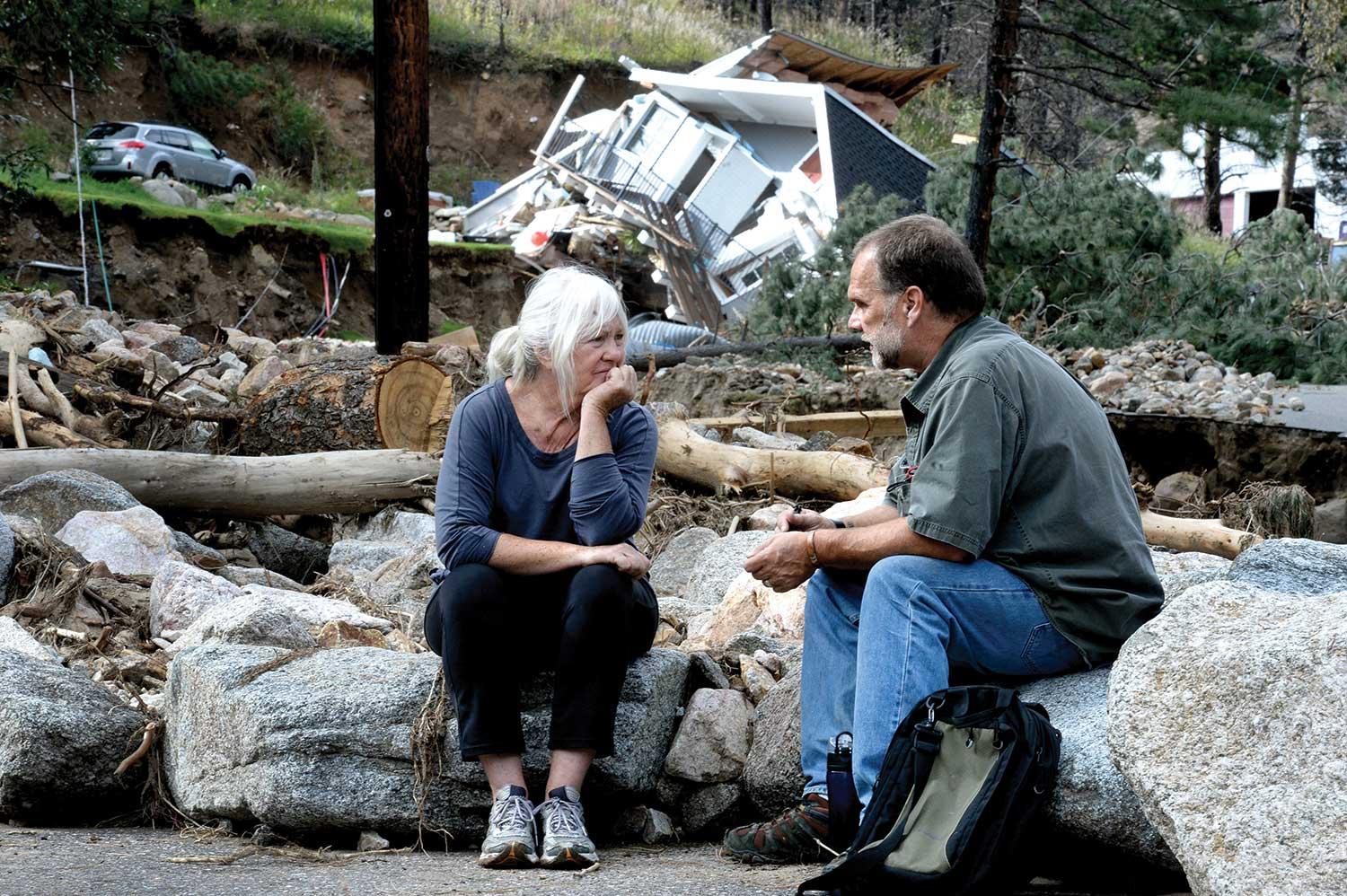
Inquiry: Disaster Response With Kathleen Tierney

Salina resident Anne Brady, left, talks with FEMA inspector Jerry Williams about her flood-damaged property located up Four Mile Canyon on Sept. 19, 2013, on Gold Run Road in Boulder County.
Resilient Recovery
Kathleen Tierney, director of CU-Boulder’s Natural Hazards Center, examines the post-disaster window of opportunity.
What is the first thing people do after a disaster strikes?
When residents experience disaster damage, one of their first impulses — after helping their neighbors and making sure they are safe — is to begin the recovery process immediately. Understandably, people want to get back to normal life as quickly as possible and restore things to the condition they were in before disaster struck.
What would be a better way to respond?
When disaster strikes, there is often a “window of opportunity” during which community leaders and residents can begin a discussion on what they learned as a result of their disaster experiences and how they can best go about making their communities safer. Anyone who goes through a disaster wants to make it a once-in-a-lifetime experience.
Can you cite a community that decided to rebuild differently?
The small community of Greensburg, Kan., was essentially leveled by a tornado in 2007. The residents came together and decided they wanted to rebuild in an energy efficient and sustainable way and make Greensburg a true green city. And they did. Greensburg is looked at around the world as an example of very forward-thinking and sustainable recovery.
How can communities avoid losses?
As community residents, we need to begin looking at disaster-loss reduction as a public good like clean air and water and good roads, and we need to demand that government and the private sector provide this service. There is much that can be done and much to be learned from communities that have decided to become more disaster resilient.
What is the payoff?
A FEMA-sponsored study I was involved in looked at whether disaster mitigation efforts resulted in taxpayer savings through lower subsequent disaster relief payouts. It found that one dollar in mitigation investment results in four dollars in future savings to the federal government.
Photography by Jeremy Papasso/Daily Camera

